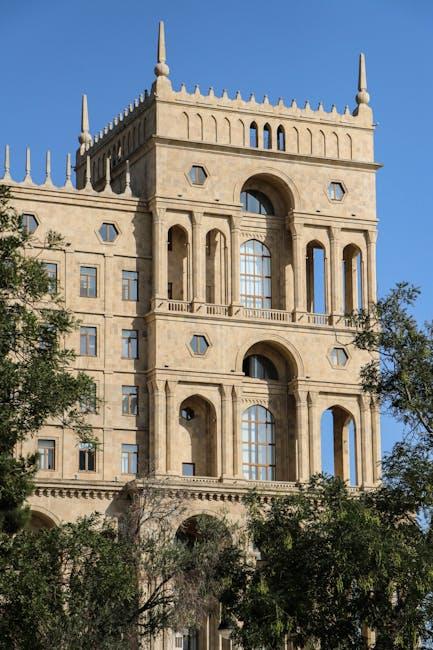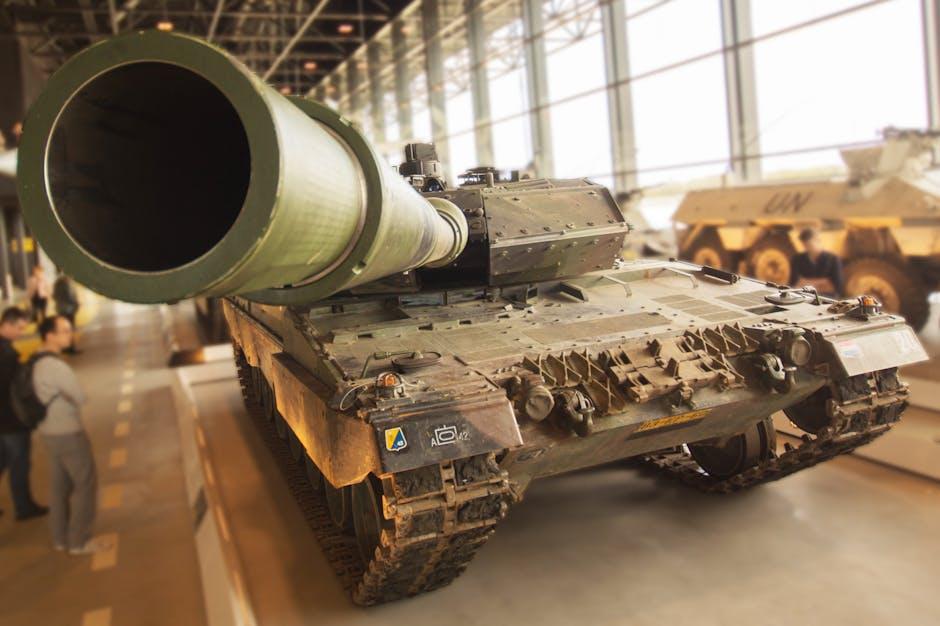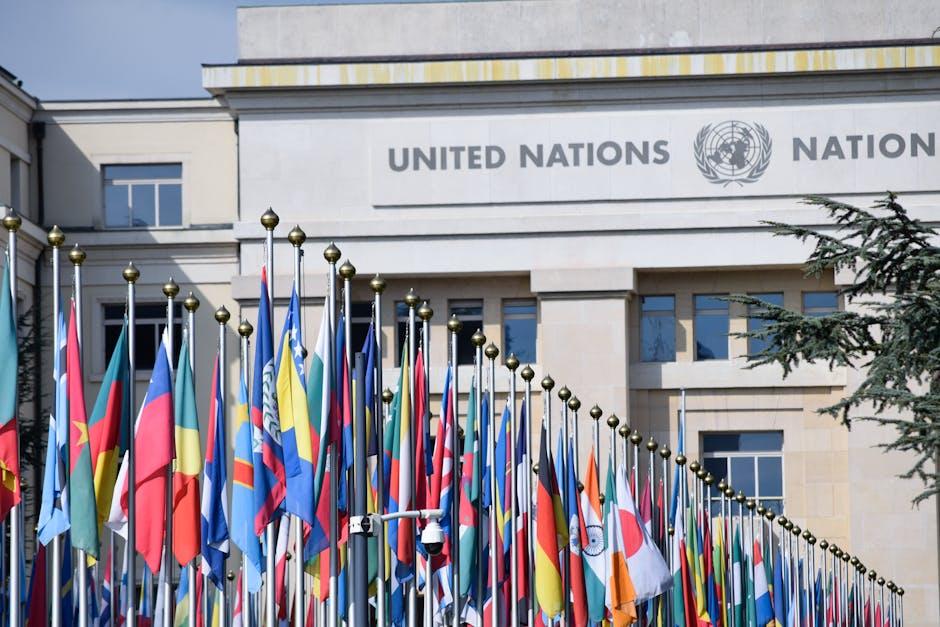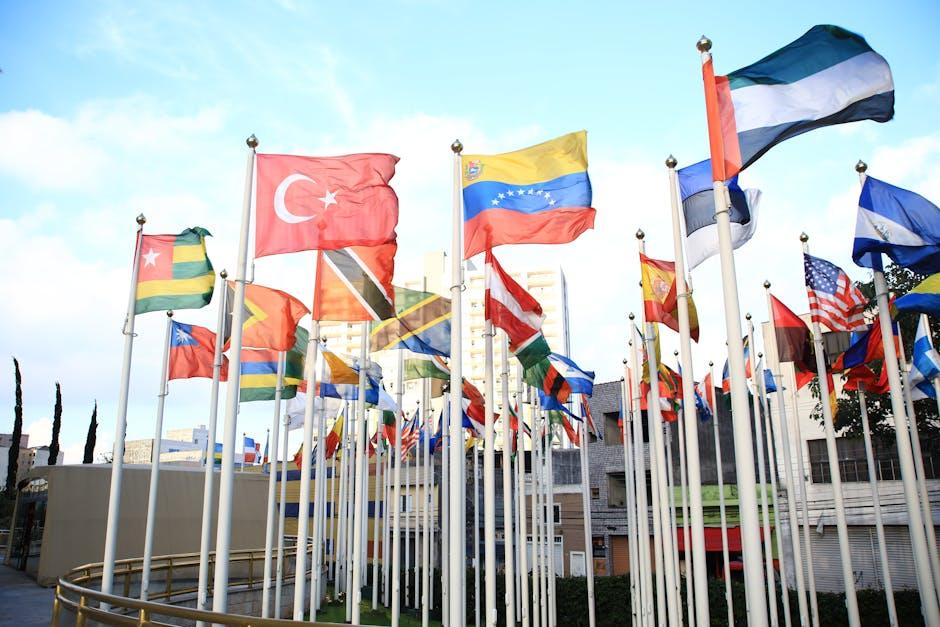In a world woven together by complex ties and ever-shifting alliances, the United Nations stands as a monumental thread stitching diverse nations into a tapestry of dialogue and cooperation. Since its inception, the UN has transcended traditional statecraft, reshaping the landscape of modern diplomacy by fostering collaboration where division once thrived. This article explores how the United Nations has become more than a forum for debate—emerging as a pivotal architect in bridging cultural divides, resolving conflicts, and guiding the global community toward a shared future. Through its innovative approaches and relentless pursuit of peace, the UN continues to redefine what it means to navigate the intricate dance of international relations in the 21st century.
Table of Contents
- The Evolution of Global Dialogue Through United Nations Initiatives
- Key Mechanisms of the UN Shaping Contemporary Diplomatic Practices
- Addressing Challenges in International Relations Through Multilateral Cooperation
- Strategic Recommendations for Enhancing the UN’s Role in Future Diplomacy
- In Summary

The Evolution of Global Dialogue Through United Nations Initiatives
Over the decades, the United Nations has served as the cornerstone for fostering global communication, encouraging countries to engage beyond traditional diplomatic confines. Its initiatives have transformed isolated standoffs into constructive conversations by promoting multilateralism and inclusivity, ensuring even smaller nations have a voice. Programs such as peacekeeping missions and international forums have not only reduced conflicts but also created platforms for shared solutions to environmental, economic, and humanitarian challenges.
Key pillars exemplify this transformative approach to diplomacy:
- Peacebuilding & Conflict Resolution: UN-led negotiations help reconcile conflicting parties with impartial mediation.
- Human Rights Advocacy: Continuous efforts to uphold universal rights facilitate trust and mutual respect among states.
- Global Development Goals: Collaborative targets, like the SDGs, unite nations toward sustainable progress.
| Year | UN Initiative | Impact |
|---|---|---|
| 1948 | Universal Declaration of Human Rights | Set global human rights standards |
| 1988 | Peacekeeping Operations Expansion | Enhanced conflict management worldwide |
| 2015 | Sustainable Development Goals | Unified global agenda for 2030 |

Key Mechanisms of the UN Shaping Contemporary Diplomatic Practices
The United Nations operates as a multifaceted platform where dialogue transcends borders, enabling member states to collaboratively address global challenges. At the heart of this diplomatic evolution are peacekeeping operations, which have redefined conflict resolution by embedding neutrality and international consensus into military and civilian interventions. These missions not only prevent the escalation of violence but also establish frameworks for political dialogue, actively shaping how diplomacy navigates fragile environments. Complementing these efforts, the UN’s robust mechanisms for multilateral negotiation catalyze shared responsibility and collective action, reinforcing the paradigm that diplomacy thrives most effectively when diverse voices and interests converge around common goals.
Beyond the operational sphere, the UN’s commitment to norm building fosters universal principles that underpin diplomatic conduct, such as human rights, sustainable development, and international law. This norm-setting fosters a predictability and legitimacy that empowers nations to engage in dialogue with mutual respect and accountability. Consider the following table, which illustrates key UN mechanisms and their core diplomatic impacts:
| UN Mechanism | Core Diplomatic Impact | Example |
|---|---|---|
| Peacekeeping Missions | Conflict prevention and political stability | D.R. Congo MONUSCO |
| General Assembly Forums | Inclusive multilateral dialogue | Annual General Debate |
| International Law Codification | Normative frameworks for state behavior | Universal Declaration of Human Rights |
| Specialized Agencies | Targeted technical cooperation | WHO health initiatives |

Addressing Challenges in International Relations Through Multilateral Cooperation
In an increasingly interconnected world, the power of multilateral engagement serves as the cornerstone for resolving complex international challenges. When countries come together under a shared framework, such as the United Nations, they tap into a collective intelligence and resource pool that transcends individual capabilities. Multilateral cooperation fosters dialogue, encourages transparency, and builds trust, which is essential for addressing global issues like climate change, security threats, and humanitarian crises. By uniting diverse perspectives, these agreements promote innovative solutions that respect both sovereignty and the common good.
Effective collaboration often hinges on structured mechanisms that facilitate equitable participation and enforce commitments. Below is a snapshot of vital elements that underpin successful multilateral efforts:
| Key Element | Role in Cooperation |
|---|---|
| Inclusivity | Ensures representation from all affected parties, fostering legitimacy |
| Consensus Building | Promotes compromise and shared ownership of decisions |
| Accountability | Enables tracking of progress and enforcement of agreements |
| Flexibility | Allows adaptation to evolving global dynamics and challenges |
- Technology sharing enhances problem-solving capabilities across borders.
- Conflict mediation nurtures peace by addressing disputes early and impartially.
- Joint humanitarian response maximizes efficiency during crises.

Strategic Recommendations for Enhancing the UN’s Role in Future Diplomacy
To amplify its influence on the global stage, the UN must embrace innovations that bridge traditional diplomacy with the rapidly evolving geopolitical landscape. Prioritizing inclusive dialogue platforms will empower underrepresented nations and non-state actors, fostering a richer tapestry of perspectives. Additionally, leveraging technology such as AI-driven analytics and secure digital communication channels can streamline conflict resolution processes and predict emerging crises more effectively. Instituting continuous training programs focused on cultural intelligence and mediation skills for its diplomats will further embed adaptability and empathy into the UN’s diplomatic toolkit.
Another pivotal strategy involves reinforcing partnerships with regional organizations and civil society to enhance ground-level impact. This synergy promotes shared responsibility and strengthens peace-building efforts beyond mere negotiation tables. The following outline exemplifies key focal areas for bolstering the UN’s diplomatic presence:
- Digital Diplomacy: Engaging publics and stakeholders through social media campaigns and virtual consultations.
- Youth Engagement: Incorporating younger voices into peace processes and policy dialogues.
- Conflict Early-Warning Systems: Utilizing big data to identify and mitigate potential escalations.
- Resource Optimization: Streamlining operations to enhance responsiveness without sacrificing inclusivity.
| Strategic Focus | Expected Outcome |
|---|---|
| AI-Powered Conflict Prediction | Timely mediation and reduced escalations |
| Inclusive Dialogue Platforms | Enhanced mutual understanding and trust |
| Regional Partnerships | Localized solutions and stronger peace enforcement |
| Youth Engagement Initiatives | Future-ready diplomacy with diverse ideas |
In Summary
As the world continues to navigate the complexities of an interconnected era, the United Nations stands as a testament to the enduring quest for dialogue and cooperation. Bridging nations beyond borders and ideologies, it shapes the contours of modern diplomacy with a commitment to peace, equity, and shared progress. While challenges persist, the UN’s evolving role reminds us that diplomacy is not a static art but a living, breathing endeavor—one where every voice, every nation, holds the promise of building a more cohesive and hopeful global community.



